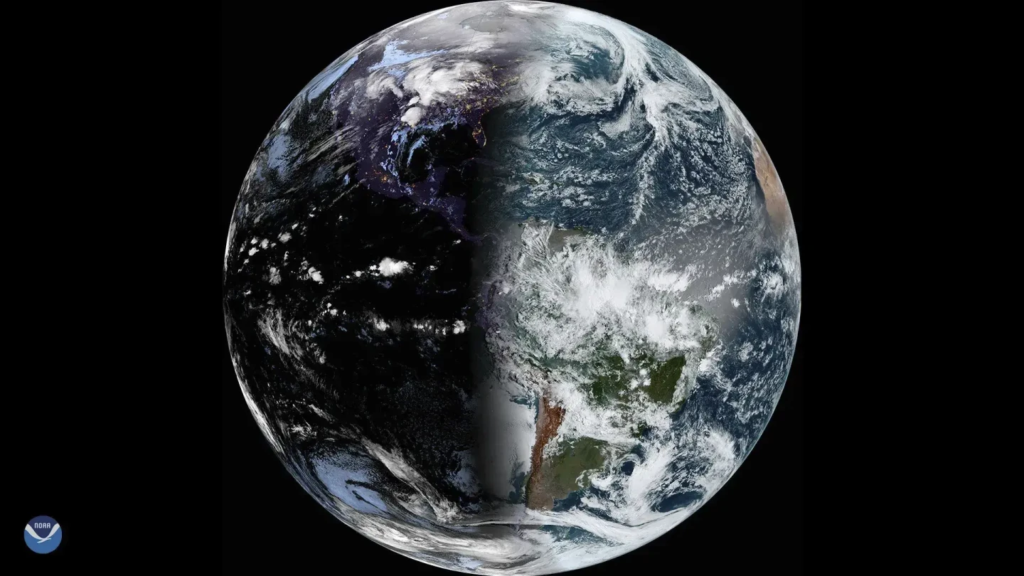The Spring Equinox, occurring today, March 20, 2025, marks a pivotal moment in our planet’s journey around the Sun. This event signifies the official onset of spring in the Northern Hemisphere and autumn in the Southern Hemisphere. At this time, the Sun crosses the celestial equator moving northward, resulting in nearly equal day and night lengths worldwide.
Understanding the Equinox
The term “equinox” derives from Latin, meaning “equal night,” reflecting the balance between daylight and darkness during this period. This equilibrium occurs because the Earth’s axis is not tilted toward or away from the Sun, allowing sunlight to illuminate both hemispheres evenly. The Spring Equinox can fall between March 19 and 21, depending on the year.
Cultural Significance and Global Celebrations
Throughout history, the Spring Equinox has been a symbol of renewal and rebirth, inspiring various cultural festivities:

- Nowruz: Celebrated by millions, Nowruz marks the Iranian New Year and coincides with the Spring Equinox. Festivities include cleaning homes, wearing new clothes, and preparing special dishes to usher in a fresh start.
- Chichen Itza Phenomenon: At the Mayan archaeological site in Mexico, the equinox is observed as the Sun creates a shadow resembling a serpent descending the El Castillo pyramid. This phenomenon draws crowds eager to witness the interplay of light and architecture.
- Celtic Traditions: In ancient Celtic cultures, the equinox was a time to honor the rebirth of the sun, with rituals celebrating fertility and the awakening of nature. Modern pagans continue to observe this day with ceremonies and festivals.
Astronomical Context
Astronomically, the Spring Equinox occurs when the Sun crosses the celestial equator from south to north. This event not only signifies a change in seasons but also serves as a reference point for celestial navigation and the calibration of calendars.
Modern Observations
In contemporary times, the equinox continues to captivate interest. For instance, in 2025, the United Kingdom experienced its warmest day of the year on the equinox, with temperatures reaching 21.3°C (70.3°F) in London. This warmth, coupled with increased daylight, encourages outdoor activities and a collective embrace of the changing season.
Embracing the Season of Renewal
The Spring Equinox offers a moment to reflect on balance and new beginnings. Many cultures use this time for spring cleaning, both literally and metaphorically, to refresh living spaces and personal aspirations. Rituals such as opening windows to let fresh air circulate, lighting candles for purification, and performing symbolic cleansings are common practices aimed at inviting positive energy and growth.
As we stand at this threshold between winter and summer, the equinox serves as a reminder of nature’s cyclical beauty and our connection to the cosmos. It’s an opportunity to align with the rhythms of the Earth, setting intentions for the months ahead and celebrating the shared experiences that unite us across cultures and continents.
What is the solstice?
The solstices mark the times during the year when the Earth is at its most extreme tilt toward or away from the sun. This means the hemispheres are getting very different amounts of sunlight — and days and nights are at their most unequal.
During the Northern Hemisphere’s summer solstice, the upper half of the earth is tilted in toward the sun, creating the longest day and shortest night of the year. This solstice falls between June 20 and 22.
Meanwhile, at the winter solstice, the Northern Hemisphere is leaning away from the sun — leading to the shortest day and longest night of the year. The winter solstice falls between December 20 and 23.

